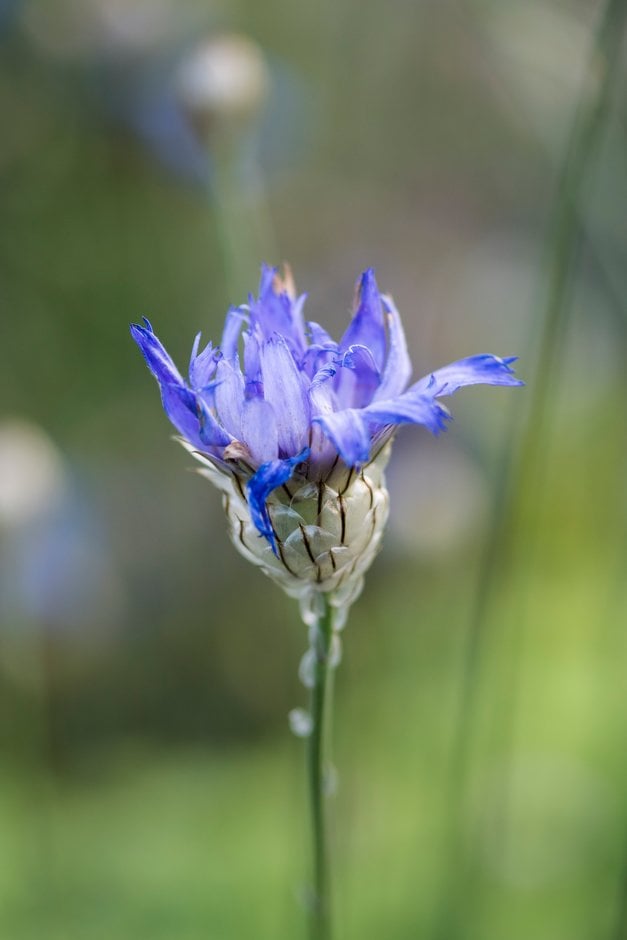Catananche caerulea
blue-flowered Cupid's dart
A short-lived herbaceous perennial to 50-90cm in height, with erect, grassy leaves and branched sprays of dark-centred, violet-blue daisy-like flowers 3-5cm in width from mid-summer to autumn; seedheads are papery and attractive
Other common names
blue cupidoneblue succory
see morecompulsion-of-love
cornflower
flower of love
Greek love plant
blue daisy
Synonyms
Catananche caerulea 'Cupid's Dart'Catananche bicolor hort.
Size
Ultimate height
0.5–1 metresTime to ultimate height
2–5 yearsUltimate spread
0.1–0.5 metresGrowing conditions
Moisture
Well–drainedpH
Acid, Alkaline, NeutralColour & scent
| Stem | Flower | Foliage | Fruit | |
| Spring | Green | |||
|---|---|---|---|---|
| Summer | Grey Silver Blue | Green | ||
| Autumn | Green | |||
| Winter |
Position
- Full sun
Aspect
East–facing or South–facing or West–facing
Exposure
Exposed or Sheltered Hardiness
H5Botanical details
- Family
- Asteraceae
- Native to GB / Ireland
- No
- Foliage
- Deciduous
- Habit
- Bushy
- Genus
Catananche may be annuals or short-lived perennials with narrow leaves and solitary flowers heads with silvery bracts and strap-shaped florets; can be dried
- Name status
Correct
- Plant range
- C Europe to W Mediterranean
How to grow
Cultivation
Suited to any well-drained soil in full sun; good drought resistance. Often short-lived especially if grown on heavy soil
Propagation
Propagate by seed. Propagate by division in spring or by root cuttings in winter
Suggested planting locations and garden types
- Cottage and informal garden
- Flower borders and beds
Pruning
Cut back after flowering
Pests
Generally pest-free
Diseases
May be affected by powdery mildews
Love gardening
Sign up to receive regular gardening tips, inspiration, offers and more
View our Privacy Policy
Get involved
The Royal Horticultural Society is the UK’s leading gardening charity. We aim to enrich everyone’s life through plants, and make the UK a greener and more beautiful place.

